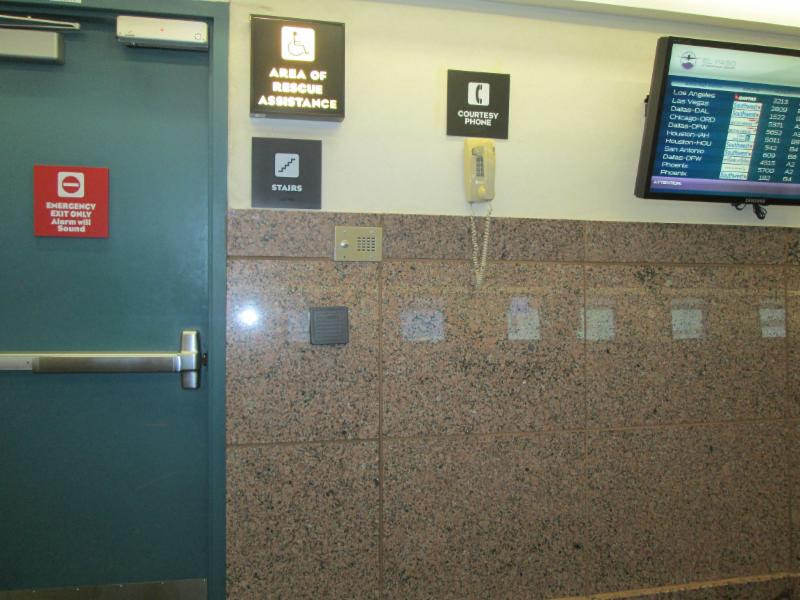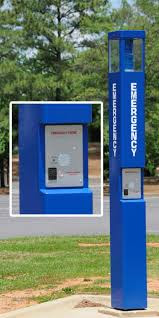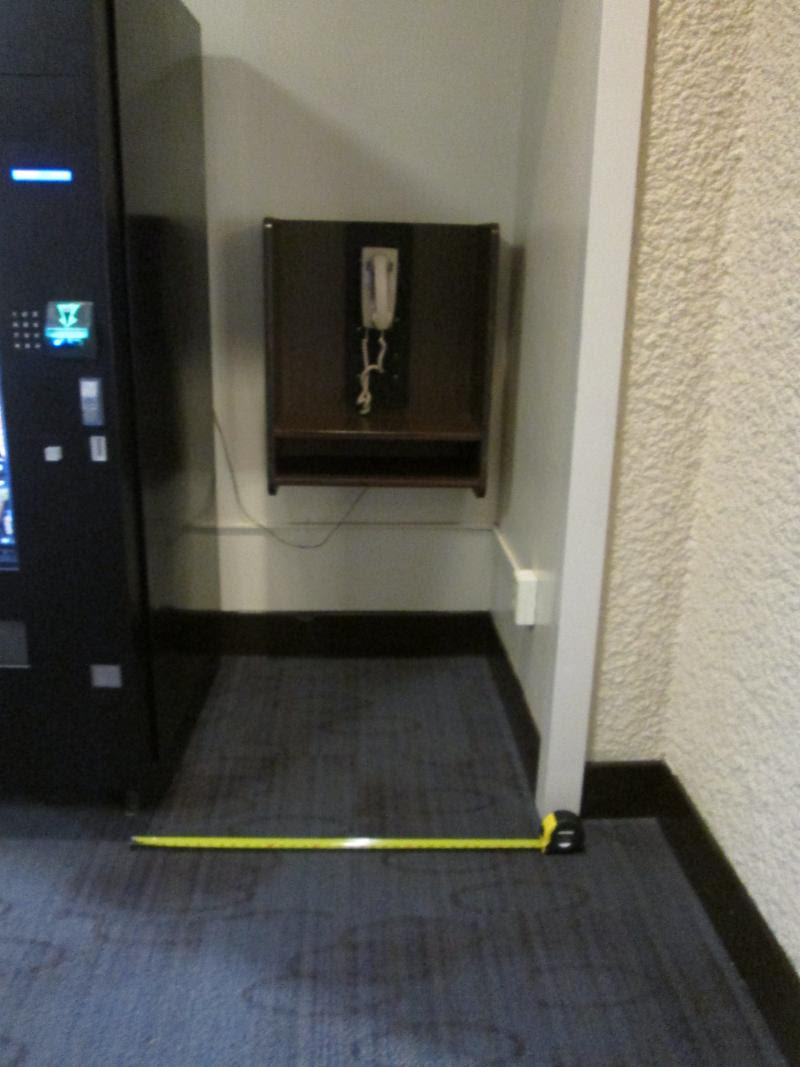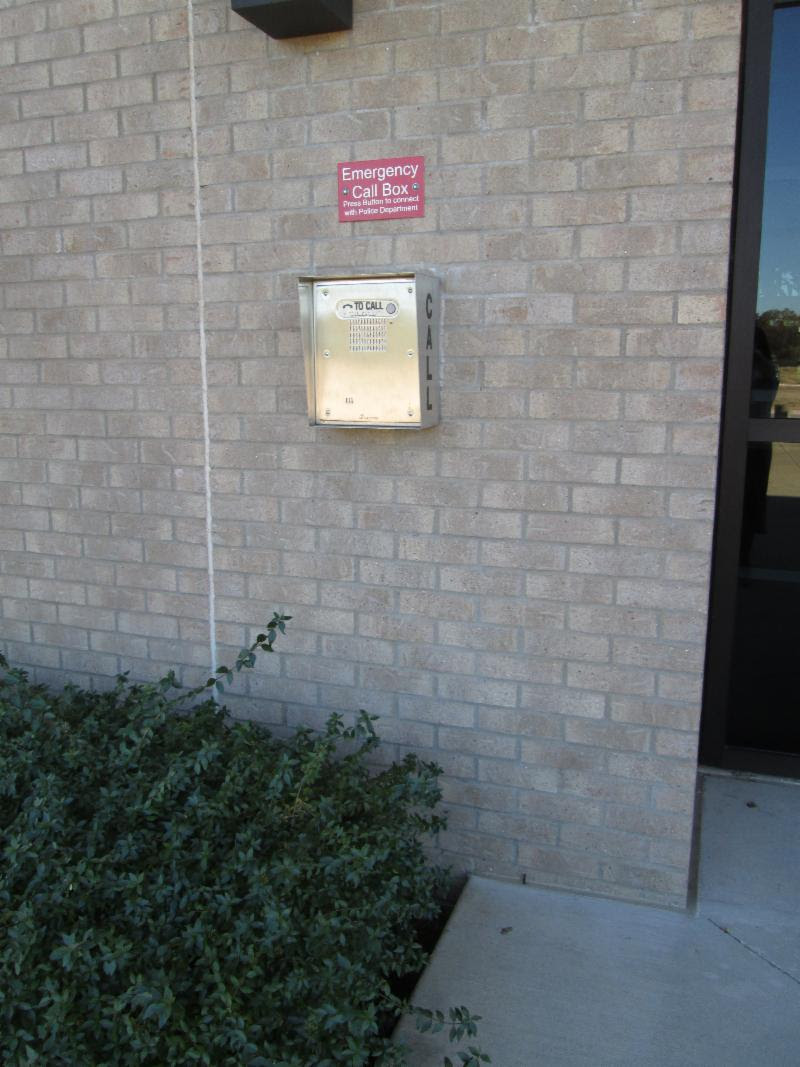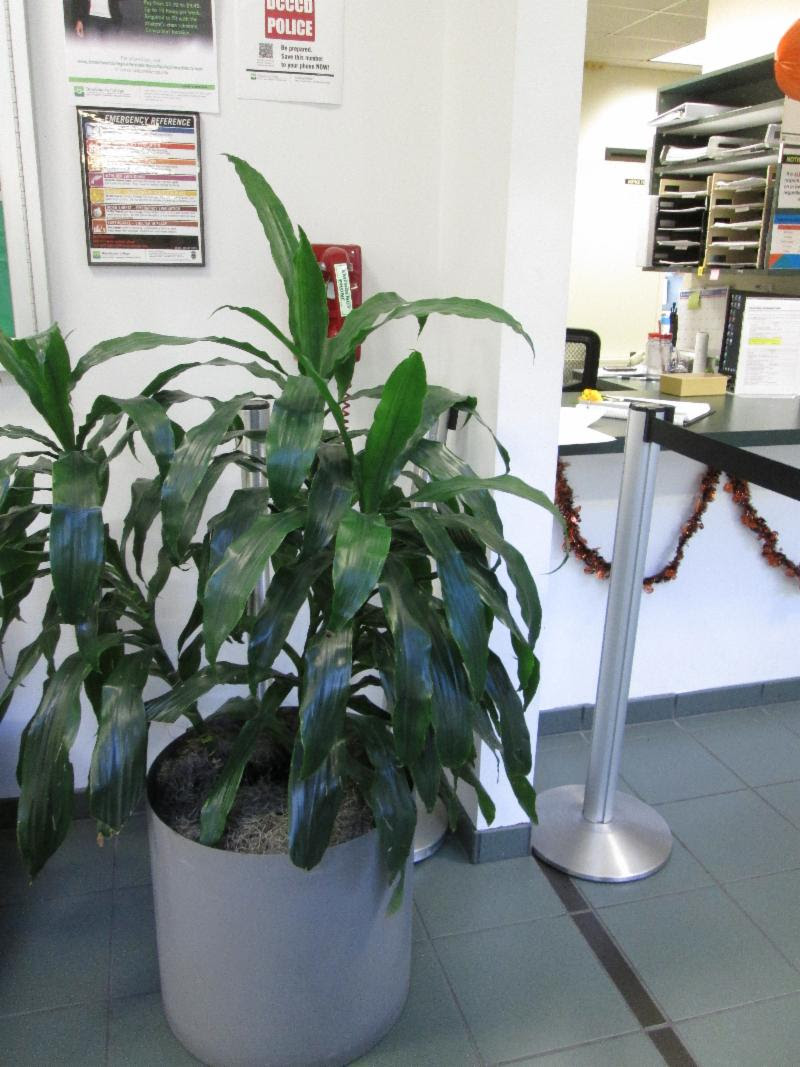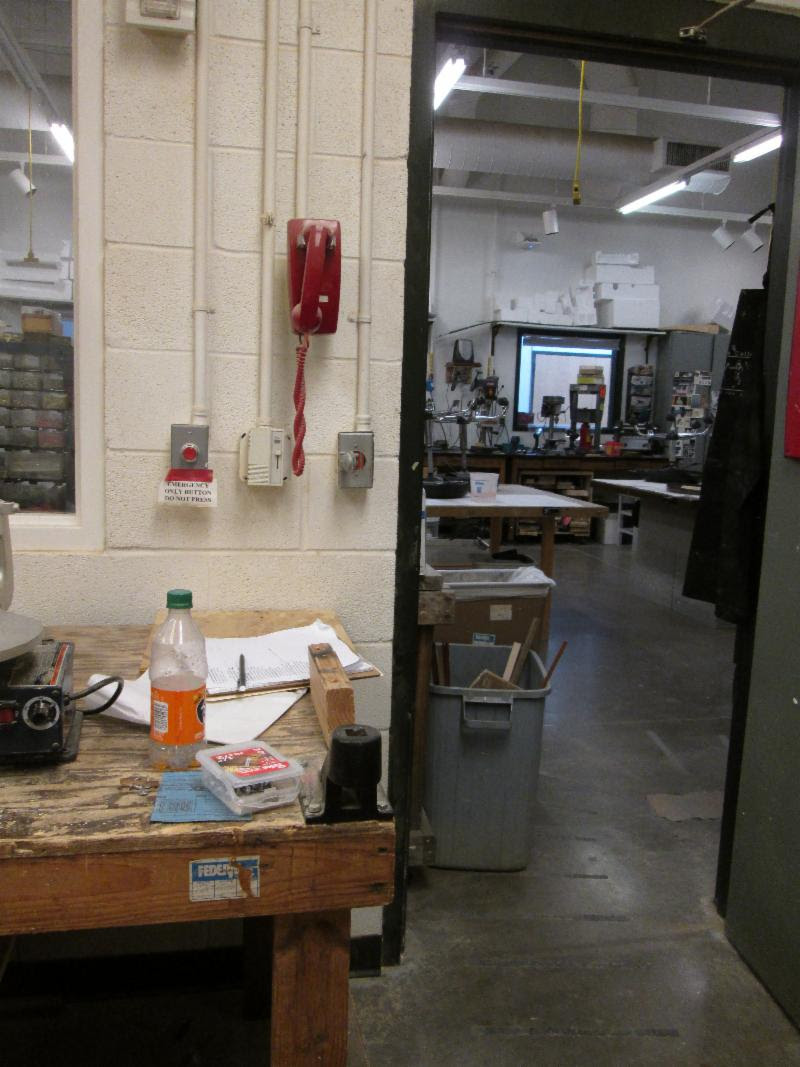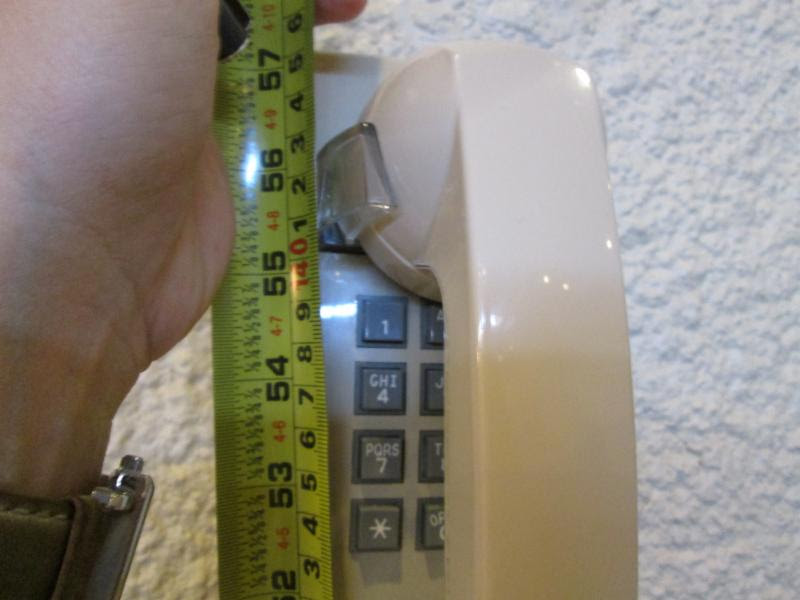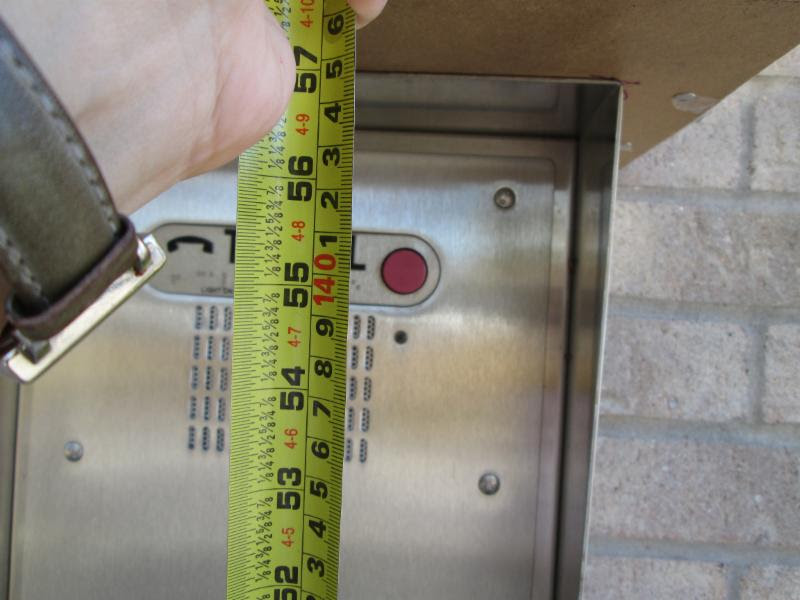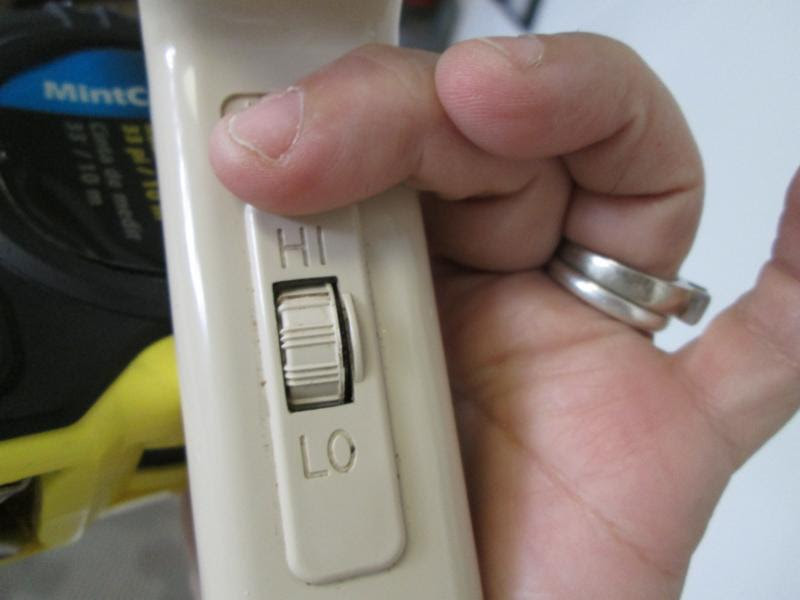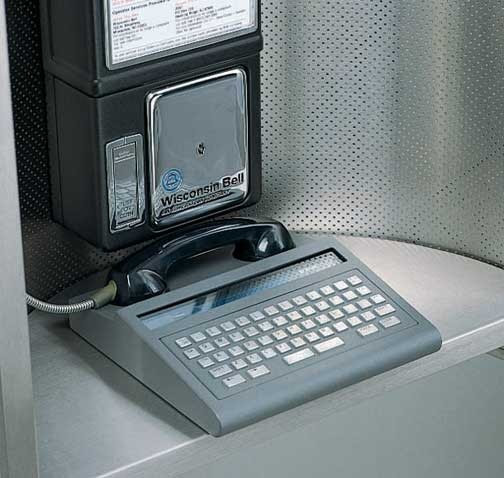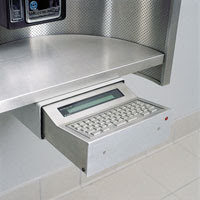Requirements for Accessible Telephones
The ADA section 217 states that the telephones and calling devices that are required to comply should follow section 704
Section 704 tells us the following:
1) At least one of the telephones must be designed for the use by people who are in wheelchairs.
a) A 30″x48″ clear floor space must be provided. The clear floor or ground space shall not be obstructed by bases, enclosures, or seats
|
|
| the clear floor space to approach this phone is less than 36″ wide |
|
|
| There is a fixed seat in front of this telephone |
|
|
The emergency phone was located over the landscaping next to the concrete pad. This is not considered having a “clear floor space”
|
|
|
| This phone is located behind the planter. Even though the planter is not fixed, technically the phone does not have a clear floor space to approach it. |
|
|
| The phone is located behind a table |
b) If the clear floor space is positioned for a parallel approach, it should be located as shown in the figure below
c) If the clear floor space is positioned for a forward approach, it should be located as shown in the figure below
c) Operable parts shall comply with 308 and 309. Telephones shall have push-button controls where such service is available.
|
|
| The operable part on this phone (the push buttons) were mounted higher than 48″ a.f.f. |
|
|
| The button to call the police was mounted higher than 48″ a.f.f.
|
d) The cord from the telephone to the handset shall be 29 inches (735 mm) long minimum.
|
|
| This phone had a cord that was 26″ long |
2. The telephones should also be designed for the hearing impaired to have the ability to use it. Some telephones are required to provide volume control and TTY (An abbreviation for teletypewriter)
a) All public telephones are required to have volume controls. Volume controls shall be equipped with a receive volume control that provides a gain adjustable up to 20 dB minimum. For incremental volume control, provide at least one intermediate step of 12 dB of gain minimum. An automatic reset shall be provided.
|
|
| This phone had a volume control device built in on the handset
|
|
|
| Most pay phones have volume controls on the cabinet |
b) TTYs required at a public pay telephone and shall be permanently affixed within, or adjacent to, the telephone enclosure. Where an acoustic coupler is used, the telephone cord shall be sufficiently long to allow connection of the TTY and the telephone receiver.
|
|
| some TTY phones are placed on a shelf that is provided on the phone cabinet |
|
|
| Sometimes the TTY is a permanent part of the cabinet |
|
 Abadi
Abadi 


